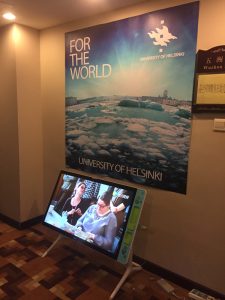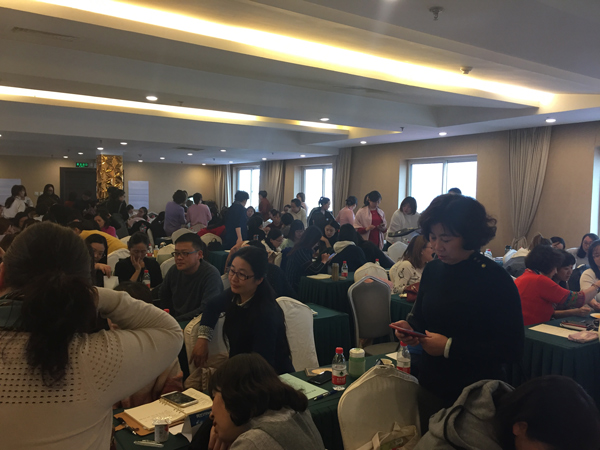Finnish Counselor for Education: Teachers should also keep up with the times and change the way of teaching and thinking
 November 5–7, University of Helsinki Center for Continuing Education HY+ in conjunction with Preschool Education magazine and Edutimes Education Group held a three-day advanced seminar on “Application of Finnish STEM Education in Kindergartens” in Beijing. This seminar was intended for a comprehensive introduction to the use of STEM education in kindergartens. Dr. Mari-Anna Suurmunne, Finnish Counselor for Education, said that Finland values highly the development of education, with a particular emphasis on the development of teachers and an open attitude towards education. “The world is changing with new challenges and opportunities constantly emerging, so teachers should also keep up with the times, change their ways of thinking and teaching in order to cultivate talents that meet the demand of the future society.”
November 5–7, University of Helsinki Center for Continuing Education HY+ in conjunction with Preschool Education magazine and Edutimes Education Group held a three-day advanced seminar on “Application of Finnish STEM Education in Kindergartens” in Beijing. This seminar was intended for a comprehensive introduction to the use of STEM education in kindergartens. Dr. Mari-Anna Suurmunne, Finnish Counselor for Education, said that Finland values highly the development of education, with a particular emphasis on the development of teachers and an open attitude towards education. “The world is changing with new challenges and opportunities constantly emerging, so teachers should also keep up with the times, change their ways of thinking and teaching in order to cultivate talents that meet the demand of the future society.”
STEM is the acronym of Science, Technology, Engineering, and Mathematics. STEM curriculum focuses on strengthening the education of students in four aspects. First, scientific literacy, that is, using scientific knowledge (e.g. physics, chemistry, biology and geospatial science) to understand nature and participate in processes that affect nature; second, technical literacy, the ability to use, manage, understand and evaluate technology; third, engineering literacy, that is, understanding the process of technical engineering design and development; and fourth, mathematical literacy, the ability to discover, express, explain and solve mathematical problems in various scenarios.
“STEM education is student-centered education. Teachers need to understand the needs of students before developing lesson plans based on students’ interests and learning progress,” said Kimmo Kärpijoki, Senior Sales Executive of HY+. STEM education involves inquiry- and phenomenon-based teaching methods. Inquiry-based teaching is to let children immerse themselves in relevant environments, to participate in hands-on practice, to encourage children to ask questions and explore to answer those questions. Phenomenon-based teaching is to explore the background of one theme, set up some experiments, and let children actually do hands-on practice, so that they find problems and seek to address them.
“STEM education focuses on improving students’ comprehensive hands-on ability, so it is very important to stimulate children’s interest early,” added Kimmo Kärpijoki. Finland has implemented STEM education from kindergarten. Teachers provide guidance and relevant information to children and let them find and discover themselves. The purpose is to improve children’s interest in learning and to be willing to explore and seek more knowledge.
 Kimmo Kärpijoki believes that children should have the ability to solve problems, the ability to think logically and critically, the ability to integrate multiple disciplines and the ability to teamwork. “Society is constantly evolving, so teachers should constantly adjust their pedagogies to cultivate the talents needed in the future society.”
Kimmo Kärpijoki believes that children should have the ability to solve problems, the ability to think logically and critically, the ability to integrate multiple disciplines and the ability to teamwork. “Society is constantly evolving, so teachers should constantly adjust their pedagogies to cultivate the talents needed in the future society.”
It is understood that HY+ also provides an online training program for STEM teachers in China in order to share the Finnish STEM education theory and practice and bring excellent educational resources to the country in the fastest and most synchronized manner.
Dr. Mari-Anna Suurmunne said: “Education is borderless. The future development of society will be more internationalized, so will the talents of the future. Finland has accumulated rich experience in STEM education practice in recent decades. We hope that more educators and children will benefit from our teaching experience and results-sharing.”
Writer: Reporter Hao Mengjia
The article is published on November 9, 2018 in People’s Network – Education Channel (people.com.cn).





